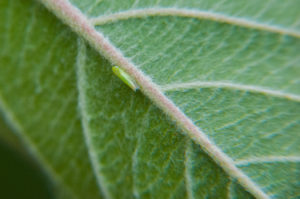WNC Orchard Insect Pest Populations – June 2, 2020
go.ncsu.edu/readext?698013
en Español / em Português
El inglés es el idioma de control de esta página. En la medida en que haya algún conflicto entre la traducción al inglés y la traducción, el inglés prevalece.
Al hacer clic en el enlace de traducción se activa un servicio de traducción gratuito para convertir la página al español. Al igual que con cualquier traducción por Internet, la conversión no es sensible al contexto y puede que no traduzca el texto en su significado original. NC State Extension no garantiza la exactitud del texto traducido. Por favor, tenga en cuenta que algunas aplicaciones y/o servicios pueden no funcionar como se espera cuando se traducen.
Português
Inglês é o idioma de controle desta página. Na medida que haja algum conflito entre o texto original em Inglês e a tradução, o Inglês prevalece.
Ao clicar no link de tradução, um serviço gratuito de tradução será ativado para converter a página para o Português. Como em qualquer tradução pela internet, a conversão não é sensivel ao contexto e pode não ocorrer a tradução para o significado orginal. O serviço de Extensão da Carolina do Norte (NC State Extension) não garante a exatidão do texto traduzido. Por favor, observe que algumas funções ou serviços podem não funcionar como esperado após a tradução.
English
English is the controlling language of this page. To the extent there is any conflict between the English text and the translation, English controls.
Clicking on the translation link activates a free translation service to convert the page to Spanish. As with any Internet translation, the conversion is not context-sensitive and may not translate the text to its original meaning. NC State Extension does not guarantee the accuracy of the translated text. Please note that some applications and/or services may not function as expected when translated.
Collapse ▲ Codling Moth
Codling Moth
Codling moth degree-day (DD) accumulations range from 420 in Henderson County to about 750 in the Lincoln/Cleveland County area. Henderson County, and locations of similar elevation (>2000 ft), are in the midst of first-generation flight, and codling moth should be considered a potential concern for another two weeks. With that said, to date populations have been very low in Henderson County. In lower elevation orchards with an accumulation of 750 DD, we are approaching the end of first-generation adult emergence (>90% emergence complete), and additional insecticide applications are most important where first-generation populations have been high based on pheromone trap captures.
Tufted Apple Bud Moth
Tufted apple bud moth DD accumulations in Henderson County are about 525 as of June 2. Historically TABM populations are more important in Henderson County opposed to other production regions. Based on forecasts, the ideal timing for an insecticide will be in about 7 to 10 days, when DD accumulations will approach 800. A single application of an insecticide recommended for codling moth will provide season-long control of TABM; these include the diamides (i.e., Altacor, Voliam Flexi, Exirel, Verdepryn) or Delegate. In addition, Intrepid also provides excellent season-long control of TABM. Because the diamides and Delegate are more effective against codling moth than Intrepid, the latter should only be used where codling moth is not a concern.
Secondary Pests
Aphids, leafhoppers, and mites have been very low to nonexistent up to this point in time. However, with warmer and hopefully drier weather returning, these are pests to keep an eye out for in the coming weeks.
Learn more about southeastern apple insect pests at the Apple Insect Management page.
2020 Average Weekly Trap Captures
| HENDERSON COUNTY | |||
| Insects per trap | |||
| May 18 | May 26 | Jun 1 | |
| Codling moth | 0.5 | 0.1 | 0.5 |
| Oriental fruit moth | 0.5 | 0.2 | 0.4 |
| Tufted apple bud moth | 8.0 | 25.5 | 81.0 |
| Redbanded leafroller | 0.0 | 0.0 | 0.0 |
| Obliquebanded leafroller | 0.0 | 0.0 | 7.0 |
| Lesser appleworm | 0.0 | 0.0 | 7.0 |
| Apple maggot (abandoned and research orchards) | – | – | set |
| Brown marmorated stink bug (commercial) | 0.6 | 0.8 | 0.6 |
| Brown marmorated stink bug (unsprayed) | 1.8 | 1.8 | 1.3 |
| Spotted tentiform leafminer | 0.0 | 0.0 | 0.0 |
| Dogwood borer | 14.0 | 14.0 | 37.0 |
| Peachtree borer | 0.0 | 0.0 | 0.0 |
| Lesser peachtree borer | 16.0 | 16.0 | 48.0 |
| San Jose scale | 0.0 | 0.0 | 0.0 |
*Note that these averages illustrate only the timing of insect emergence and fluctuations in populations, and are not representative of population levels in any given orchard. The only way to have an accurate assessment of an individual orchard’s populations is to set up traps in that orchard.
2020 Accumulated Degree Days
| HENDERSON COUNTY | ||||
| May 18 | May 26 | Jun 1 | ||
| Codling moth (Biofix 4/20) | 202 DD | 299 DD | 402 DD | |
| Oriental fruit moth (Biofix 3/30) | 496 DD | 631 DD | 765 DD | |
| Tufted apple bud moth (Biofix 4/27) | 238 DD | 374 DD | 507 DD | |
2020 Pest Trends
Visit WNC Orchard Insect Populations for archived posts.


